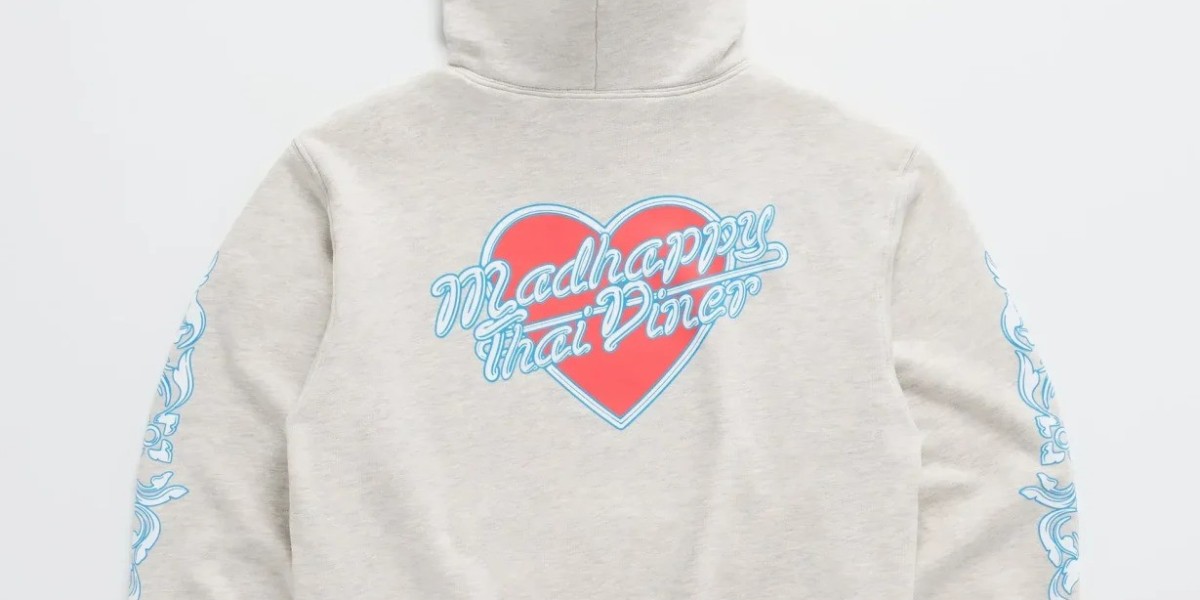The Rise of Purpose-Driven Streetwear
In a world where fashion trends are as fleeting as viral internet memes Mad Happy has carved out a space of rare permanence. More than a brand, Mad Happy represents a cultural shift. It’s a fusion of streetwear cool and emotional depth—a brand that not only dresses its audience but speaks to their souls. Emerging from Los Angeles in 2017, Mad Happy has grown into a phenomenon that challenges conventional norms about both fashion and mental health. With brightly colored garments emblazoned with hopeful messages and mental health affirmations, Mad Happy isn’t just selling clothes; it’s promoting a mindset. In an industry often criticized for being superficial, Mad Happy’s authenticity stands out like neon on a rainy night.
The Founders: Friends, Visionaries, and Advocates
The story of Mad Happy begins with four friends: Peiman Raf and Noah Raf, brothers with entrepreneurial spirits, alongside Mason Spector and Joshua Sitt. Each came from different backgrounds but shared a common vision: to build a brand that stood for something greater than just aesthetics. Mason’s own journey with mental health issues became a core inspiration for the brand's ethos. Instead of hiding vulnerability, Mad Happy embraced it. This was revolutionary—not just for the fashion industry, but for how young people talk about their feelings. The founders understood that style and storytelling were powerful tools, and they used both to start honest conversations.
The Name Itself: Oxymoron or Enlightenment?
“Mad Happy.” At first glance, the name feels paradoxical—almost jarring. How can someone be both mad and happy? But therein lies the genius. The name captures the emotional duality that many of us live with daily. It reflects the messiness of human emotions, reminding us that it’s okay not to be okay. This core message resonates deeply with Gen Z and Millennials who are increasingly seeking authenticity and vulnerability from the brands they support. Mad Happy took the bold step of leaning into emotional complexity, making it not only acceptable but stylish to wear your feelings on your sleeve—literally.
The Clothing: A Canvas for Expression
Mad Happy’s clothing line is unmistakable. It mixes comfort, bold colors, and striking typography to deliver more than just wearable items. Hoodies, sweatpants, and T-shirts—staples of modern streetwear—are reimagined through uplifting messages and minimalist design. The brand often uses phrases like “Local Optimist” and “Mental Health Is Health,” transforming each garment into a personal manifesto. The appeal is universal, yet intimate. Wearing Mad Happy feels like joining a movement rather than following a trend. And while many fashion brands rely on exclusivity, Mad Happy strives for inclusivity—emotionally, psychologically, and socially.
Collaborations That Amplify the Message
Mad Happy is not content with preaching to the choir. It expands its message through collaborations with giants like Lululemon, Columbia Sportswear, and even Curb Your Enthusiasm. These partnerships are never superficial. Each collaboration reflects a deliberate alignment with brands or themes that echo Mad Happy’s mental health mission. The Columbia collaboration, for instance, brought attention to seasonal depression through outerwear built for gloomy winters—highlighting how fashion can quite literally protect your mental and emotional wellbeing. These collabs extend the reach of Mad Happy’s message while keeping its core values intact.
Mental Health Advocacy: The Heartbeat of the Brand
Perhaps the most defining aspect of Mad Happy is its commitment to mental health advocacy. This is not a marketing gimmick. It’s a deeply integrated pillar of the brand. Through The Mad Happy Foundation, launched in 2021, a portion of all sales is funneled into mental health initiatives. The foundation supports research, outreach, and programming focused on making mental healthcare more accessible and less stigmatized. The brand also invests heavily in The Local Optimist, a blog and content platform that offers insights, interviews, and tips for emotional wellbeing. It's fashion meets wellness journalism—a fusion that feels both fresh and much-needed.
In-Store Experiences: Retail Therapy, Redefined
Madhappy Tracksuit stores are not your typical retail environments. When you walk into one, you’re greeted not only with racks of clothing but also with thoughtfully designed spaces that encourage reflection and community. Think interactive installations, journal walls, and quiet corners. These are not just stores—they are safe spaces. Some pop-ups have even featured free mental health resources and on-site therapists or counselors. This innovative approach redefines the shopping experience and aligns it with the brand’s mission: promoting mental wellness through every customer interaction.
A Digital Community: The Power of Vulnerability Online
In today’s world, a brand’s Instagram feed can say more than a billboard in Times Square. Mad Happy knows this well and has cultivated a digital presence that reflects honesty, relatability, and hope. The brand frequently posts user-generated content, mental health reminders, and candid behind-the-scenes looks at its process. These digital efforts create a feedback loop where the community feels seen and heard. In a sea of curated perfection, Mad Happy’s social media is a breath of fresh air. It's not just about showing what you wear—it's about sharing how you feel.
Criticism and Authenticity: Walking the Tightrope
No brand is without scrutiny, and Mad Happy has faced its share. Some critics argue that mixing mental health with consumerism risks commodifying struggle. Others question whether the brand’s high price points contradict its message of accessibility. These are valid concerns. However, Mad Happy has consistently taken steps to remain transparent. Through its foundation, it shows financial commitment to real-world change. Through storytelling, it gives a platform to underrepresented voices. And through design, it opens up tough conversations. While the balance between profit and purpose is delicate, Mad Happy appears to be walking the tightrope with intention and care.
Cultural Impact: More Than a Fashion Statement
The true measure of Mad Happy’s success isn’t just in sales or social media followers—it’s in the cultural conversation it has helped shape. In schools, on subways, and across coffee shops, you’ll spot people wearing Mad Happy not just as a fashion choice, but as a personal declaration. The brand has helped normalize therapy, validate emotional struggles, and elevate mental health to the forefront of public discourse. In doing so, Mad Happy has become a symbol for an emotionally intelligent generation—one that embraces self-expression and empathy with equal fervor.
Future Outlook: Expanding the Movement
As the brand grows, Mad Happy shows no signs of slowing down. The founders are focused on global expansion while maintaining their mental health mission. Plans include expanding the foundation, launching new wellness content initiatives, and creating more immersive in-person experiences. There’s even talk of educational partnerships and branded retreats. The challenge will be maintaining the brand’s authenticity at scale—a test many purpose-driven companies fail. But if Mad Happy’s track record is any indication, its commitment to emotional integrity will continue to set it apart in an increasingly saturated market.
Fashion With Feeling
Madhappy has redefined what it means to be a fashion brand in the 21st century. In an age dominated by fast fashion and disposable trends, it has anchored itself in something timeless: the human experience. Through vibrant designs, heartfelt messaging, and a genuine commitment to mental health, Mad Happy offers something rare—fashion that feels good, not just looks good. It’s a community, a safe space, and a movement rolled into one. As the world continues to wrestle with anxiety, isolation, and identity, Mad Happy stands as a beacon of optimism. Not blind optimism, but the kind that acknowledges struggle and chooses hope anyway.
This is not just a brand.
This is a revolution in how we see fashion, how we talk about mental health, and ultimately—how we care for one another.








